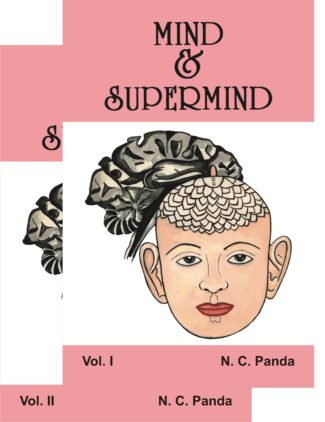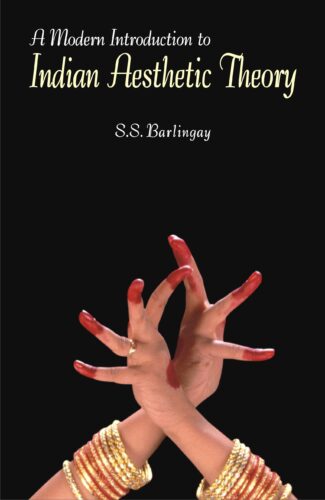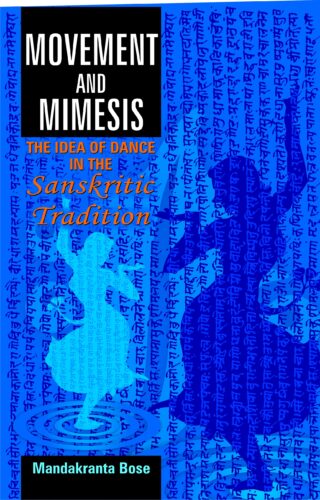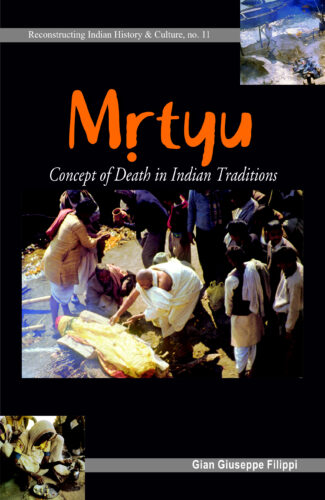Showing 191–200 of 384 results

The book systematically unfolds Vedantic psychology to evolve an integrated perspective on mind and to synthesize ancient wisdom with contemporary sciences. The author also speculates on linking mind to the supermind the Brahman.
Astonishingly rich is the heritage of Indian psychology. Embodied in some of the better-known, traditional philosophical systems, it convincingly spells out the rationale behind memory, recognition, emotions, instincts, reasoning, creativity, and myriad other mind-related phenomena, which sofar remain baffling, unanswered questions in modern cognitive sciences, mechanistic psychology and their kindred disciplines. Mind and Supermind, for the first time, systematically unfolds Vedantic psychology in its larger effort not only to evolve an integrated perspective on mind, but also to synthesize ancient wisdom with contemporary sciences. A distinguished scholar of Sanskrit, philosophy and science, Professor Panda here re-explores the nature of mind, its Indian concept and how it compares with its Western world-view: religious, philosophical, psychological, and scientific. Thus elaborating the concepts of mind as set out in the Sankhya, Yoga, Tantra, Vedanta and other orthodox systems vis-a-vis (a) philosophical perspectives: from Plato and Aristotle to Wittgenstein and Strawson, (b) psychological viewpoints of William James, Freud, Jung, Watson and others, (c) theories of modern physiologists/physicists governing brain, mind, and artificial intelligence; the author builds a solid foundation for the superstructure of parapsychological phenomena. And also speculates about the possibilities for (individual) mind to link up with the Supermind, which, in Vedantic concept, is Brahman: fundamental Consciousness that illumines everything living and non-living. Growing from years of Dr. Pandas indepth, analytical studies, the book is offered to dis-cerning audiences in two parts: Indian Perspective (Volume 1) and Western Perspective (Volume 2), with relevant illustrative material.

This book tells the story of minerals and metals in ancient India by unravelling the mysteries of archaeomaterials with scientific inquiry into production modes and use of minerals. It also studies the indigenous literary sources for the purpose.
In two volumes, the book tells the fascinating, coherentlywoven story of the Minerals and Metals from across the entire sub-continental sprawl of the old-world India (including Pakistan and Bangladesh). Covering a vast span of over five millennia: from the Pre-Harappan Chalcolithic sites, like Mehargarh, Mundigak and Ganeshwar to about ad 1200, Volume 1 is a brilliant effort to unravel the mysteries of archaeo-materials with scientific inquiry into both the modes of production and use of minerals, gems, metals, alloys and other kindred artefacts. Including, as he does, a chronological discussion of the specifically excavated sites, from Mehargarh to Taxila, Professor Arun Biswas captures a panoramic view of the hoary, richly variegated cultures which, in their final analysis, lead him not only to question the diffusionist theory concerning the Aryan intrusion, but also to highlight, among a range of his first-time-arrived conclusions, the primacy of India in the areas of non-ferrous ore mining, production of carburised iron, wootz, steel, forge-welding of wrought iron, distilled zinc and high-zinc brass. Barring the foreign travellers accounts, the volume draws exclusively on archaeological evidence. Volume 2 approaches the theme from the viewpoint of indigenous literary sources chronologically marshalling over three thousand years of Sanskrit writings: ranging from Rigveda to Rasaratnasamuccaya. Reviewing, among other things, the entire gamut of studies in gemmology (ratnashastra) and alchemy (rasashastra), the authors here set out a meticulous analysis of Rasaratnasamuccaya: a fourteenth century text, high-lighting the climactic heights of iatrochemistry in ancient India. With detailed explanations of Sanskrit technical expressions, the volume also tries to correlate, wherever possible, literary evidence with archaeological data. Sponsored by the Indian National Science Academy (INSA), New Delhi, Minerals and Metals in Ancient India has involved years of the authors painstaking research. Together with maps, figures, tables, appendices and illustrative photographs, it will evoke enormous interest in geologists, metallurgists,archaeo-metallurgists, mineralogists, gemmologists, historians of science, archaeologists, Indologists, and the scholars of Indian pre- and ancient history.

All arts in India owe their roots to the theoretical structure developed by Bharatamuni in his celebrated work Natyasastra. His theory of beauty is known as the theory of rasa. The present volume has shown how the insight of Bharata was developed by the classical scholars from Abhinavagupta to Jagannatha who propounded the theories with names like rasa, alamkara, riti, vakrokti, dhvani etc. to employ the theory of beauty from natya (drama) to kavya (poetry).
The foundation of the Indian aesthetic theory can be traced to Bharatamunis Natyashastra where he gave his theory of beauty (theory of rasa) which was later elaborately developed by learned scholars. In this work, Prof. Barlingay examines the development of the rasa theory by various authorities on art and aesthetics and finally presents his own critical understanding of it. The volume begins with a survey of the history of Indian art by examining painstakingly the relation between art and beauty, perception of time and space in art, and classification of arts. It then plunges into a detailed study of origin and development of rasa theory: from rasa in the Vedas and Upanishads to Bharatas rasa theory and perspectives of Abhinavagupta, Bhattatauta, Bhatta Lollata, Kuntaka, Dandin, Mammata, Vamana, Rudrata, Vishvanatha, Bhamaha, Jagannatha and others who enriched it further with their own theories. It explains how principles were employed and re-employed by the masters to reveal various meanings, inter-relationships, symbols, and perceptions of art. It highlights the salient features of each masters unique manner of interpretation of art concepts. The work is a must for scholars and students keen to study the fundamentals of concept and theory of Indian art, particularly with reference to drama and poetics.

All arts in India owe their roots to the theoretical structure developed by Bharatamuni in his celebrated work Natyasastra. His theory of beauty is known as the theory of rasa. The present volume has shown how the insight of Bharata was developed by the classical scholars from Abhinavagupta to Jagannatha who propounded the theories with names like rasa, alamkara, riti, vakrokti, dhvani etc. to employ the theory of beauty from natya (drama) to kavya (poetry).
The foundation of the Indian aesthetic theory can be traced to Bharatamunis Natyashastra where he gave his theory of beauty (theory of rasa) which was later elaborately developed by learned scholars. In this work, Prof. Barlingay examines the development of the rasa theory by various authorities on art and aesthetics and finally presents his own critical understanding of it. The volume begins with a survey of the history of Indian art by examining painstakingly the relation between art and beauty, perception of time and space in art, and classification of arts. It then plunges into a detailed study of origin and development of rasa theory: from rasa in the Vedas and Upanishads to Bharatas rasa theory and perspectives of Abhinavagupta, Bhattatauta, Bhatta Lollata, Kuntaka, Dandin, Mammata, Vamana, Rudrata, Vishvanatha, Bhamaha, Jagannatha and others who enriched it further with their own theories. It explains how principles were employed and re-employed by the masters to reveal various meanings, inter-relationships, symbols, and perceptions of art. It highlights the salient features of each masters unique manner of interpretation of art concepts. The work is a must for scholars and students keen to study the fundamentals of concept and theory of Indian art, particularly with reference to drama and poetics.

Its 100 quotes on Moods and Emotions empower us to mitigate the bad effects of our behaviour and inculcate in us the healthy emotional persuits. Each quote is in tandem with a stimulating painting of Lord Ganesha, the Lord of Peace, Prosperity and Wisdom, and helps us to overcome many a crisis in our life.
This book of 100 quotes on Moods and Emotions empowers one to mitigate the bad effects of one’s behaviour and inculcate in him/her the healthy emotional persuits. Each quote is in tandem with a stimulating painting of Lord Ganesha, the Lord of Peace, Prosperity and Wisdom. Many wise men and women have worked on these wonderful concepts of behaviour and blessed the world with a number of thought-provoking and enlightening quotes for one to lead a cheerful and healthy life. The authors too join these great personalities with their own creations.
Mood is basically a psychological condition indicating one’s positive or negative state of mind. Emotion, per se, is a complex psycho-physiological experience of an individual’s state of mind and has its direct link with mood, temperament, personality, disposition and motivation. Emotions act as an effective component to motivation, which direct and energize one’s behaviour. These quotes help the readers to manage their moods and emotions with a positive attitude.

The Indian subcontinent is home to some spectacular mosques which are architectural marvels produced by the spread of Islam in India. 54 important mosques including their locations, history, structure and plan patterns, are covered in this volume which will be indispensable for scholars and students of Indo-Islamic architecture.
The spread of Islam in India produced some of the most spectacular monuments, the mosques stand as testimony to the great architectural skill and expertise of the Indian subcontinent through centuries and constitute one of the most important aspects of the rich architectural culture of the region. This volume showcases some 54 important mosques spread across the Indian subcontinent from Lahore in modern Pakistan to Gaur in modern West Bengal and from Delhi in the north to Kayalpatnam and Bijapur in South India. It mentions the location of the mosques, their history, structure and plan patterns and discusses various elements of the structures in detail: their entrances, pillars, porticoes, type of mihrab and other aspects. It emphasises the importance of a particular masjid such as its typifying the mosques of a certain period or dynasty and setting the standard for later masjids in some manner. It presents some other plans and proportional elevations in the appendices for a comparative study. An extremely useful list of Muslim rulers of the Indian subcontinent is provided. With maps and drawings of plans of mosques, the book is a painstaking effort to examine the evolution and iconography of the mosque architecture in the region. The volume will be indispensable for scholars and students of Indo-Islamic architecture.

The book contains precise characteristics of dances in India, fundamental questions about the nature of dancing, delving deep into its origin, extending over 2000 years. It makes an exhaustive comparative study, the first of its kind, tracing the growth, techniques and forms of dancing and its expansion by contact with peripheral regional styles, including the foreign ones.
The antiquity of dance in India is well known but its precise characteristics are not. What, exactly, constituted dancing? How was it distinguished from other performing arts? These and other fundamental questions about the nature of dancing can best be answered by delving into the rich corpus of extant Sanskrit treatises on dancing, which extend over two thousand years. Of all sources of the history of dancing, these works remain the most eloquent witness, for they record not only the precepts of the art but also the details of its practice. The present book reconstructs the evolving discourse on dancing in India by making an exhaustive comparative study, the first of its kind, of all available Sanskrit works. The author traces the growth of the techniques and forms of dancing and shows how the central tradition of the art, and also the oldest, expanded by contact with peripheral regional styles, including foreign ones, and eventually merged with them into a synthesis that forms the basis of present-day classical dances of India. Mandakranta Bose’s research in the Sanskritic tradition of Indian dance and drama has led her to view these arts equally in their historical, theoretical and performance aspects. For back of the cover Her canvas is wide, almost wider than that of late Dr. V. Raghavan who was the first to bring to light the wealth of material in Sanskrit relating to dance, music and theatre . . . The work needs to be read very carefully by all serious students of and researchers on dance. Dr Kapila Vatsyayan

Many learned people, from various sects, have written about death and soul. Ceremonies, after death, for honouring the dead, especially in Hindu religion have been dealt chronologically. Also the importance of cloning after death and its resultant impact on society has been discussed.
Many learned people, from various sects, have written about death and soul. Ceremonies, after death, for honouring the dead, especially in Hindu religion have been dealt chronologically. Also the importance of cloning after death and its resultant impact on society has been discussed.

Professor Filippi explores the Indian view of mortal existence from an individuals conception to his/her journey to the Kingdom of Yama with rare scientific objectivity by unveiling a complex network of sentiments, beliefs, scriptural references, customs, etc.
Yama, in Hindu mythology, is the eschatologist and god of death. And is, thus, dreaded. Even in todays India, there is a fearful hesitancy, if not conscious avoidance, of any talk about him. Yet, paradoxically, the phenomenon of death does not evoke a similar fear in the Indian psyche accepted, as it is, a natural event, a part of life: just like poverty, sickness and old age. Here is an insightful, at once compelling exposition of the phenomenon of death, based on plurimillennial tradition of the Hindus which, despite the affirmation of Western attitudes in certain elitist sections of the urban society, has endured since the times of the Vedas and Indic Civilization. Exploring, contextually, the age-old Indian view of mortal existence: from the very moment of an individuals conception to his/her journey to the Kingdom of Yama through the major phases of birth, growth and ageing, Professor Filippi unveils a complex network of sentiments, beliefs, scriptural references, customs, hopes, ritualistic practices and much else relevant to the great adventure of death. Notwithstanding the sentimental undertones of the mrtyu-theme, Dr. Filippis work outstands for its rare scientific objectivity. It has grown from years of his rigorous research effort involving not only his extensive studies of Indian literature: classical as well as modern, but also his interviews with Indian samnyasins, brahmanas, relatives of the dead, and the persons living around the cremation grounds. Together with visual material, bibliographic references, and a glossary of non-English terms, the book holds out as much appeal to the general reader as to the specialist.

Professor Filippi explores the Indian view of mortal existence from an individuals conception to his/her journey to the Kingdom of Yama with rare scientific objectivity by unveiling a complex network of sentiments, beliefs, scriptural references, customs, etc.
Yama, in Hindu mythology, is the eschatologist and god of death. And is, thus, dreaded. Even in todays India, there is a fearful hesitancy, if not conscious avoidance, of any talk about him. Yet, paradoxically, the phenomenon of death does not evoke a similar fear in the Indian psyche accepted, as it is, a natural event, a part of life: just like poverty, sickness and old age. Here is an insightful, at once compelling exposition of the phenomenon of death, based on plurimillennial tradition of the Hindus which, despite the affirmation of Western attitudes in certain elitist sections of the urban society, has endured since the times of the Vedas and Indic Civilization. Exploring, contextually, the age-old Indian view of mortal existence: from the very moment of an individuals conception to his/her journey to the Kingdom of Yama through the major phases of birth, growth and ageing, Professor Filippi unveils a complex network of sentiments, beliefs, scriptural references, customs, hopes, ritualistic practices and much else relevant to the great adventure of death. Notwithstanding the sentimental undertones of the mrtyu-theme, Dr. Filippis work outstands for its rare scientific objectivity. It has grown from years of his rigorous research effort involving not only his extensive studies of Indian literature: classical as well as modern, but also his interviews with Indian samnyasins, brahmanas, relatives of the dead, and the persons living around the cremation grounds. Together with visual material, bibliographic references, and a glossary of non-English terms, the book holds out as much appeal to the general reader as to the specialist.
| There are no products |